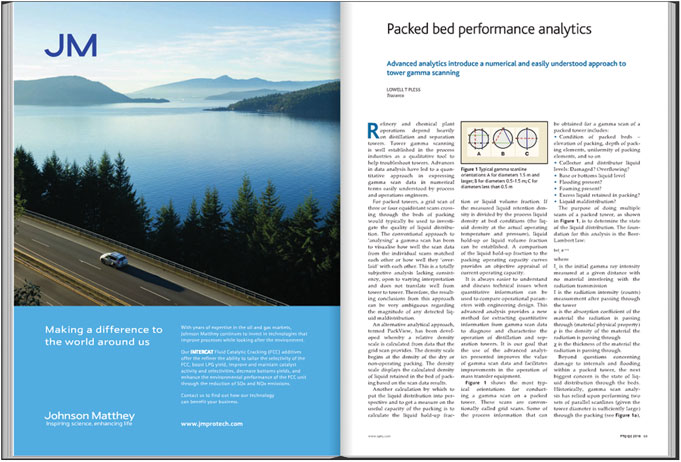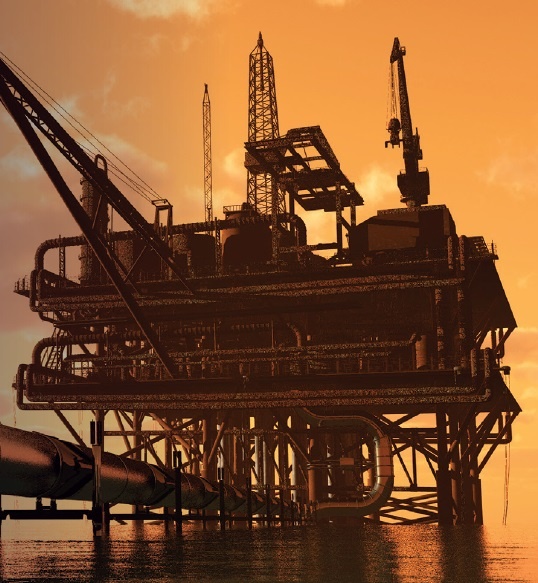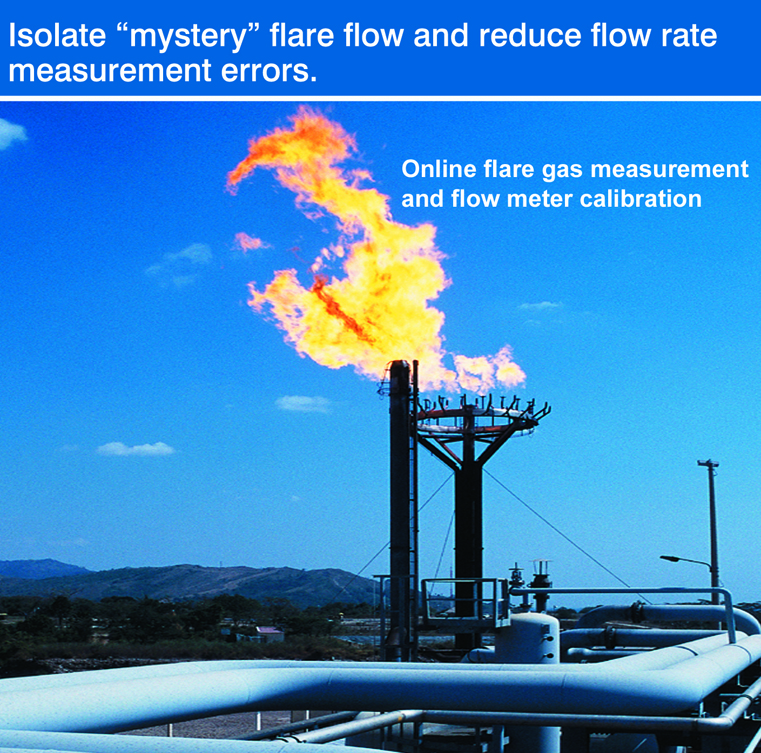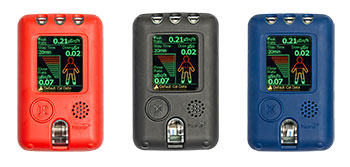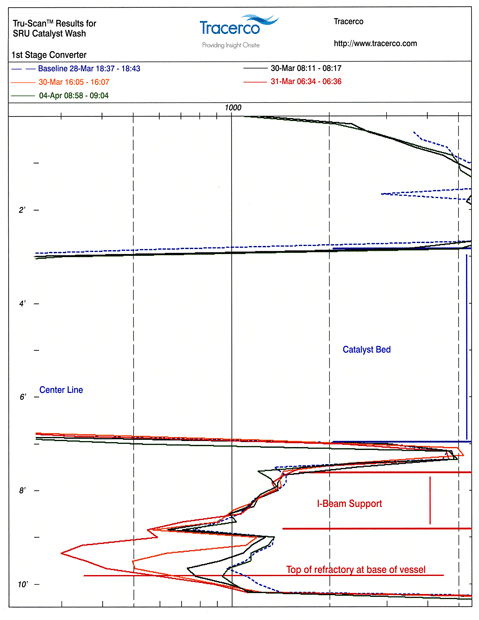Save The Date to Attend The "Measuring the Difficult to Measure Symposium"
Posted by Margaret Bletsch
Feb 25, 2019 2:44:06 PM
Topics: solids buildup, exchangers, gamma scanning distillation columns, pipeline blockage, flare gas meter, Flow Study, fccu studies, flare flow measurement, fugitive flare flow, verify flow meters, flare flowrate data, flow rate calculations, Process Diagnostics Technology, tray fouling, gamma scan, fcc services, level detection devices, packing mal-distribution, liquid distribution, quantitative analysis pack beds, PackView Analysis, packed bed towers, packed bed scan, monitor wash bed coking, tomography scan, off spec product, online leak detection, chemical leak test, feed/effluent heat exchangers, exchanger bundle leak testing, Tracer Study, packed bed performance analytics, Damage to vessel internals, trayed tower, mass transfer diagnostics
Decommissioning and the transportation of NORM and TENORM
Posted by Andrew Smith
Oct 3, 2018 9:56:48 AM
Underestimating the time and resource required to correctly transport NORM (Naturally Occurring Radioactive Material) or TENORM (Technologically Enhanced Naturally Occurring Radioactive Material) during decommissioning could prove to be costly, not least because it is likely to cause delays in shipping. It is clear that there are many considerations required to managing the transport of NORM and TENORM. Consultation with experts at the very early stages will be essential and could lead to significant cost saving benefits.
Topics: Naturally Occurring Radioactive Material, NORM Detection, NORM, NORM Management, Decommissioning, Radiation Waste Adviser, TENORM, Radiation Protection, Radiation Protection Adviser
Think of us as more than your tower scan provider
Posted by Margaret Bletsch
Sep 20, 2018 9:52:39 PM
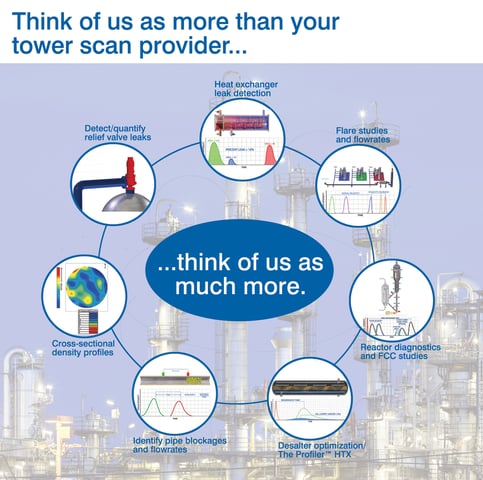
You may recognize Tracerco as the world leader in providing a wide range of scanning applications, but we would like to provide you some insight as to how we are the industry leader in tracer studies, heat exchanger leak testing, flowrate measurements, gas meter proving, monitoring for pipe blockage and FCC studies.
If you are looking to isolate mystery flare flows, detect heat exchanger leaks, optimize your desalter or to detect blockages within your piping system, Tracerco has the technology that can provide you with all the information you need.
If you would like to schedule an onsite presentation to learn more about our Process Diagnostic technologies or receive case studies on how our tracer and specialty scan technologies are able to help minimize unit downtime and optimize processes, please click here to submit your request.
Topics: leaking exchangers, Liquid maldistribution, optimising plant production, Suspected maldistribution in packed beds, Flow Study, fcc diagnostics, flare system tracers, flare flow, excessive flare flow, fcc troubleshooting, fcc unit process, fluid catalytic cracking unit, fugitive flare flow, verify flow meters, flare lines, gas meter proving techniques, fcc services, coke drum, coker optimization, delayed coke drum, liquid distribution, tomography scan, off spec product, online leak detection, chemical leak test, feed/effluent heat exchangers, exchanger bundle leak testing, Tracer Study, density of liquid
Are you planning a scheduled turnaround and want to know the advantages of scanning before and after your planned turnaround?
A Tru-Scan™ or Tru-Grid™ Scan will assist in defining and developing a turnaround critical path project scope at an early stage ensuring that your turnaround meets your goals. The most common use of gamma scans is to give process engineers and operations an online tool that results in understanding how a column is performing. This data can be used in advance of a turnaround to identify tray or packing damage and other process problems without having to shut down the column for internal inspections. These results will fully prepare turnaround planners with the knowledge they need for critical path decisions that must be made prior to a shutdown. At other times the results from a Tru-Scan™ or Tru-Grid™ Scan can either justify an unscheduled shutdown or identify options that will enable a plant to continue operating until the next scheduled shutdown.
Read more on how Tracerco scanning technologies can help to develop a plan for your turnaround planning.
Topics: Gamma Scanning, Liquid maldistribution, packed column, Packed Beds, Tru-Grid Scan, Suspected maldistribution in packed beds, turnaround schedules, turnarounds, turnaround planning, tray fouling, gamma scan, liquid distribution, quantitative analysis pack beds, PackView Analysis, packed bed towers, packed bed scan, packed bed performance analytics, density of liquid, fouling, critical path
Remove any doubt about fouling issues found in trayed and packed towers.
Posted by Margaret Bletsch
Jun 4, 2018 5:37:55 PM
Diagnose and take control of fouling issues.
Read more on how Tracerco scanning technologies can help to develop a plan to implement a routine maintenance programme for assets with fouling issues.
Topics: Gamma Scanning, Liquid maldistribution, packed column, Packed Beds, Tru-Grid Scan, Suspected maldistribution in packed beds, tray fouling, gamma scan, liquid distribution, quantitative analysis pack beds, PackView Analysis, packed bed towers, packed bed scan, packed bed performance analytics, density of liquid, fouling
Advanced analytics introduce a numerical and easily understood approach to tower gamma scanning
Refinery and chemical plant operations depend heavily on distillation and separation towers. Tower gamma scanning is well established in the process industries as a qualitative tool to help troubleshoot towers. Advances in data analysis have lead to a quantitative approach in expressing gamma scan data in numerical terms easily understood by process and operations engineers.
In a recent Tracerco article published by Petroleum Quarterly Technology (PTQ) magazine you will be able to read three example case studies of packed towers that will answer questions concerning the state of liquid distribution through the packed bed and illustrate how Tracerco's PackView™ analysis was developed to consistently analyse Tru-Grid™ Scan data to reach a conclusive result.
CLICK HERE To read the full article (Page 69) published in the Q2 2018 Petroleum Quarterly Technology (PTQ) issue.
Topics: Gamma Scanning, Liquid maldistribution, packed column, Packed Beds, Tru-Grid Scan, Suspected maldistribution in packed beds, gamma scan, liquid distribution, quantitative analysis pack beds, PackView Analysis, packed bed towers, packed bed scan, packed bed performance analytics, density of liquid
The challenging conditions faced in today’s oil and gas market has increased the focus on cost effective, sustainable operations. Operators are faced with the decision of extending or ending offshore production asset life and pre-decommissioning planning has emerged as a key challenge for the industry. Mitigating uncertainty, enabling decision making and justification as to whether to end or extend asset life, as well as detailed knowledge of asset conditions is crucial. In this blog, we will discuss how a range of Diagnostics services can be used to provide this detailed knowledge throughout late life operations.
Topics: pipeline integrity, Flow assurance, chemical tracers, reservoir, reservoir characterisation, NORM, NORM Management, Decommissioning, Flooded Memeber Inspection, Subsea Inspection, Subsea Integrity, water inflow, inflow measurement, pipeline life extension
Tracerco Diagnostics™ Flow study and meter proving services
Determine the Volume and Value of Material Lost To The Flare
Flare flow measurement is a crucial activity in chemical plants and refineries with loss of process material to the flare costing millions of dollars each year in profits and environmental costs. Tracerco Diagnostics™ Flow studies performed through sections of the flare piping system detect and isolate sources of fugitive flow. Once it is determined which unit(s) are contributing to the flare flow, each valve can be individually tested to determine which is leaking.
This blog will cover a customer case study illustrating how our Tracerco Diagnostics™ Flow studies played a key role in their predictive maintenance and process optimisation and a link to our Tracerco newsletter featuring two additional case studies on our flow study and meter proving services.
Topics: flare gas flow meter, flare study, flare system tracers, flare gas flow measurement, excessive flare flow, fugitive flare flow, Tracer Study
Active Personal Dosimetry in Industrial Radiography
Posted by Nick Hutchinson
Mar 13, 2018 8:29:12 AM
The International Atomic Energy Agency’s (IAEA) Specific Safety Guide No. SSG-11 which relates to Radiation Safety in Industrial Radiography states that radiography companies must ensure that employees (Category A Workers and potentially others who enter controlled areas) are subject to regular dose assessments in order to ensure that radiation doses are kept as low as reasonably achievable and dose limits are not exceeded. It is essential that reliable dose information is collected to ensure that the exposure of workers is properly controlled. Furthermore, dose assessments will also serve to highlight bad (and good) working practices. To meet this requirement, the employer will engage an Approved Dosimetry Service (ADS) so that they may provide suitable personal dosimeters together with a formal dose record keeping service.
Topics: ped, personal electronic dosimeter, radiation monitor, radiation safety, Radiation Protection, Radiation Protection Adviser, EPD, electronic personal dosimeter, radiography, personal dosimetry
Document liquid sulphur levels in a Sulphur Recovery Unit (SRU) Reactor during a catalyst wash.
Posted by Margaret Bletsch
Feb 27, 2018 9:54:19 PM
Are you planning to “wash” a catalyst bed in a reactor and need to monitor process conditions?
Using Tru-Scan™ technology to detect liquid levels in pressure vessels and catalyst levels in reactors is a fast and extremely reliable measurement performed online. One of the problems operations staff faced when planning a catalyst “wash” was not having an indication of any accumulated liquid level in the bottom of the vessel to monitor the procedure. Read more on how Tracerco was able to assist a customer with monitoring the liquid level throughout their planned wash campaign.
Topics: Tru-Scan, gamma scan, liquid restriction, SRU Unit, coke, Sulphur Recovery Unit, catalyst bed wash
Oil and Gas Comment and News
Tracerco's news and comment on measurement and diagnostics in Oil & Gas and processing industries
Tracerco brings comment, news, how tos and more on their blog. Sign up for regular notifications of new posts.
Subscribe to Email Updates
Recent Posts
Posts by Topic
- reservoir (18)
- reservoir characterisation (17)
- Gamma Scanning (16)
- chemical tracers (16)
- Flow assurance (15)
- Tru-Scan (15)
- gamma scan (15)
- people (15)
- pipeline inspection (15)
- Discovery (14)
- Process Diagnostics (14)
- employee recognition (14)
- pipeline integrity (14)
- tracers (14)
- Life at Tracerco (13)
- Subsea Technology (13)
- Working Lives (12)
- subsea flowlines (12)
- Colleague Forum (11)
- subsea pipelines (9)
- Asset Integrity (8)
- Explorer (8)
- Subsea Inspection (8)
- Subsea Integrity (8)
- Tru-Grid Scan (8)
- liquid distribution (8)
- nucleonic instrumentation (8)
- Awards (7)
- PackView Analysis (7)
- fluid inflow (7)
- optimising plant processing (7)
- packed bed towers (7)
- quantitative analysis pack beds (7)
- reservoir analysis (7)
- unconventional wells (7)
- Distillation Column Performance (6)
- Liquid maldistribution (6)
- Process Diagnostics Technology (6)
- Suspected maldistribution in packed beds (6)
- desalter optimization (6)
- excessive flare flow (6)
- flare system tracers (6)
- fracking (6)
- interwell (6)
- packed column (6)
- pipe in pipe (6)
- pipeline blockage (6)
- pipeline life extension (6)
- process diagnostics technologies (6)
- tracer technology (6)
- CT scanner (5)
- Separator (5)
- Subsea flexibles (5)
- Tracer Study (5)
- Tracerco Profiler (5)
- Tracerco innovations (5)
- distillation column maintenance (5)
- gamma scanning distillation columns (5)
- inflow measurement (5)
- packed bed performance analytics (5)
- packed bed scan (5)
- pipe bundles (5)
- pipeline extension (5)
- plant processing (5)
- radiation monitor (5)
- smart tracers (5)
- tracerco diagnostics (5)
- tray fouling (5)
- water inflow (5)
- CT scanning (4)
- NORM (4)
- NORM Management (4)
- Subsea Technologies (4)
- chemical leak test (4)
- chemical tracer technology (4)
- density of liquid (4)
- fcc diagnostics (4)
- fcc troubleshooting (4)
- fcc unit process (4)
- fccu studies (4)
- feed/effluent heat exchangers (4)
- fluid catalytic cracking unit (4)
- fugitive flare flow (4)
- gulf of mexico (4)
- hydrocarbon separation train (4)
- instrumentation (4)
- instrumentation control (4)
- multiphase separation (4)
- north sea (4)
- nucleonic instrument (4)
- oil inflow (4)
- online leak detection (4)
- process control (4)
- radiation (4)
- scanning technology (4)
- tower gamma scan (4)
- tower scanning (4)
- trayed tower (4)
- unconventional oil and gas (4)
- water production (4)
- Column Performance (3)
- Decommissioning (3)
- Downstream (3)
- Flow Study (3)
- Flowlines (3)
- FrothView (3)
- NORM Detection (3)
- Naturally Occurring Radioactive Material (3)
- Packed Beds (3)
- Radiation Protection (3)
- Radiation Protection Adviser (3)
- Tray Damage (3)
- adulterated fuel (3)
- brand authentication (3)
- brand protection (3)
- brand security (3)
- catalyst bed wash (3)
- consumer protection (3)
- controlled release (3)
- counterfeit detection (3)
- delayed coke drum (3)
- desalting (3)
- distillation column (3)
- distillation column scan (3)
- distillation column scanning (3)
- distillation tower scanning (3)
- enhanced interface control (3)
- exchanger bundle leak testing (3)
- fcc cracking (3)
- fcc services (3)
- fcc unit (3)
- fiscal tax recovery (3)
- flare flow (3)
- flare gas flow measurement (3)
- flare gas flow meter (3)
- flare study (3)
- fluid catalytic cracking diagnostics (3)
- fluid catalytic cracking services (3)
- frac wells (3)
- gamma ray inspection (3)
- gas processing (3)
- increase production rates (3)
- increased separator efficiencies (3)
- inflow (3)
- injected water (3)
- leak detection (3)
- leak tests (3)
- manage turnaround costs (3)
- mature offshore field (3)
- monitor wash bed coking (3)
- neutron backscatter (3)
- nucleonic technology (3)
- off spec product (3)
- oil & gas (3)
- oil processing (3)
- optimising oil and gas production (3)
- optimising plant production (3)
- packed column performance (3)
- packing mal-distribution (3)
- ped (3)
- personal electronic dosimeter (3)
- process condition monitoring (3)
- process systems (3)
- product quality (3)
- profiler (3)
- radiation detection (3)
- radiation safety (3)
- revenue protection (3)
- separator performance (3)
- technology enabling cost savings (3)
- tomography scan (3)
- tower scan (3)
- trayed columns (3)
- turnaround critical path project (3)
- turnaround planning (3)
- turnaround schedules (3)
- turnarounds (3)
- verify flow meters (3)
- water breakthrough (3)
- waterflood (3)
- waterflood injection (3)
- well development (3)
- wellbore (3)
- Catalytic cracking (2)
- Damage to vessel internals (2)
- Depropanizer scan tray damage (2)
- Engineering (2)
- Events (2)
- Flooded Memeber Inspection (2)
- Flow distribution (2)
- High temperature plant processing (2)
- Houston events (2)
- INWED22 (2)
- Imagine the Future (2)
- International Women in Engineering Day (2)
- Inventors and Innovators (2)
- Level+ (2)
- Maths (2)
- PhaseFinder (2)
- Radiation Waste Adviser (2)
- SAGD (2)
- SRU Unit (2)
- STEM (2)
- Science (2)
- Subsea (2)
- Sulphur Recovery Unit (2)
- TENORM (2)
- Technology (2)
- ThruVision scan (2)
- Tracerco technologies (2)
- Tray Capacity (2)
- Upstream (2)
- Women in STEM (2)
- Women in engineering (2)
- annular liquid distribution (2)
- area monitoring (2)
- authentication (2)
- baseline scan (2)
- brand protection technology (2)
- coke (2)
- coke buildup (2)
- coke deposits (2)
- coke drum (2)
- coke drum cycle (2)
- coke drum optimization (2)
- coker optimization (2)
- column troubleshooting (2)
- counterfeiting (2)
- cracking unit (2)
- desalter (2)
- dose rate (2)
- dosimeter (2)
- drilling (2)
- employees (2)
- exchanger (2)
- fcc (2)
- fcc process (2)
- fcc riser (2)
- fcc units (2)
- fccu process (2)
- fccu unit refinery (2)
- fixed monitoring (2)
- flare flow measurement (2)
- flare flow meter (2)
- flare flowrate data (2)
- flare gas meter (2)
- flare gas meters (2)
- flare lines (2)
- flare measurement (2)
- flooded trays (2)
- flow profiling (2)
- flow rate calculations (2)
- flowrate (2)
- fouling (2)
- fouling deposits (2)
- fuel fraud (2)
- gas flow meter proving (2)
- gas meter proving techniques (2)
- inflow tracer (2)
- insights (2)
- leaking exchangers (2)
- level detection devices (2)
- liquid restriction (2)
- marketing (2)
- mechanical integrity (2)
- monitoring (2)
- monitors (2)
- observa (2)
- oil in water (2)
- oil production (2)
- pigging (2)
- pre-turnaround scans (2)
- process diagnostics systems (2)
- process equipment (2)
- process vessels (2)
- product authentication (2)
- product protection (2)
- reservoir production modeling (2)
- residual oil saturation (2)
- safeguard brand equity (2)
- safeguard brand quality (2)
- safety (2)
- safety awareness (2)
- safety stand-down (2)
- separator study (2)
- shale (2)
- shale production (2)
- small leaks (2)
- solids buildup (2)
- stuck pig (2)
- tracer analysis (2)
- water tracer (2)
- well communication (2)
- work safe home safe (2)
- workplace safety (2)
- Ammonia converter (1)
- Be Safe (1)
- Blockages in perforated plates (1)
- CCS (1)
- CCUS (1)
- CDU (1)
- Carbon capture and storage (1)
- Carryover (1)
- Column Flooding (1)
- Demulsifier Chemical (1)
- Digital Marketing (1)
- EHS (1)
- EHS behaviour (1)
- EHS culture (1)
- EPD (1)
- Entrainment (1)
- FCCU (1)
- FMD (1)
- FMI (1)
- Global exchange (1)
- H2S Absorber (1)
- Heavy oil (1)
- InDepth (1)
- Intercat (1)
- Life cycle management (1)
- NORM Monitor-IS (1)
- NORM Survey Meters (1)
- OTC (1)
- PSV (1)
- Physics (1)
- Platform Members (1)
- Platform Memeber Integrity (1)
- Platform Structural Members (1)
- SEO (1)
- Suspected maldistribution (1)
- ThruVision (1)
- Tracerco Day (1)
- Tray weeping (1)
- Water Ingress (1)
- Weeping (1)
- activities (1)
- adulteration (1)
- authentication solutions (1)
- authentication, product authentication (1)
- beer column (1)
- brand (1)
- brand protection tehnology (1)
- butadiene condenser (1)
- butadiene purification unit (1)
- calibrate flow meters (1)
- catalyst loss (1)
- celebration (1)
- coker units (1)
- counterfeit fuel (1)
- critical path (1)
- critical path planning (1)
- crude distillation unit (1)
- crude unit (1)
- crude vacuum tower (1)
- debutanizer (1)
- desalter maldistribution (1)
- desalter performance (1)
- distillation column service (1)
- distillation tower scan (1)
- distribution study (1)
- education (1)
- electronic personal dosimeter (1)
- environmental reporting (1)
- exchangers (1)
- extraction tower (1)
- fcc addition systems (1)
- fcc additives (1)
- fcc reactor (1)
- flare gas measurement (1)
- foam profile (1)
- fouled trays (1)
- fouling accumulation (1)
- fracture diagnostics (1)
- fuel adulteration (1)
- fuel marker (1)
- fuel marker technology (1)
- fuel marking (1)
- fuel smuggling (1)
- fugitive emissions (1)
- gamma ray inspection distillation (1)
- gamma scan distillationcolumns (1)
- gammatrac (1)
- gas flow meter prover (1)
- gas plant (1)
- gas undercutting (1)
- grout monitoring (1)
- health and safety (1)
- heat exchanger (1)
- heat exchangers (1)
- interface levels (1)
- leak study (1)
- leak testing (1)
- leaking pressure safety valve (1)
- leaking psv (1)
- liquid carry-over (1)
- liquid liquid extractor (1)
- marker systems (1)
- mass transfer diagnostics (1)
- medical (1)
- mental wellbeing (1)
- mobile tracer labs (1)
- new technology (1)
- oil residence time test (1)
- outdoor fun (1)
- personal dosimetry (1)
- pig run (1)
- pig tracking (1)
- pig tracking services (1)
- plant performance (1)
- polymer tracer technology (1)
- polymerisation (1)
- popcorn polymer (1)
- pre-turnaround planning (1)
- pressure safety valve (1)
- process optimisation (1)
- process pipes (1)
- product assurance (1)
- providing insight onsite (1)
- radioactive source security (1)
- radiography (1)
- reactor cyclone (1)
- reactor distributor (1)
- reactor riser (1)
- reactor stripper (1)
- real-time insights (1)
- real-time measurement (1)
- refining (1)
- refractory depth (1)
- refractory lined pipes (1)
- refractory lined vessels (1)
- refractory loss (1)
- refractory measurements (1)
- regenerator cyclone (1)
- remaining oil saturation (1)
- reservoir fluid inflow (1)
- reservoir stimulation (1)
- responsive design (1)
- riser reactor (1)
- risers (1)
- safety behaviour (1)
- safety culture (1)
- safety education (1)
- separation tower scanning (1)
- separator systems (1)
- shutdown planning (1)
- shutdowns (1)
- source security (1)
- source theft (1)
- tower performance (1)
- trayed extraction tower (1)
- wash bed optimization (1)



